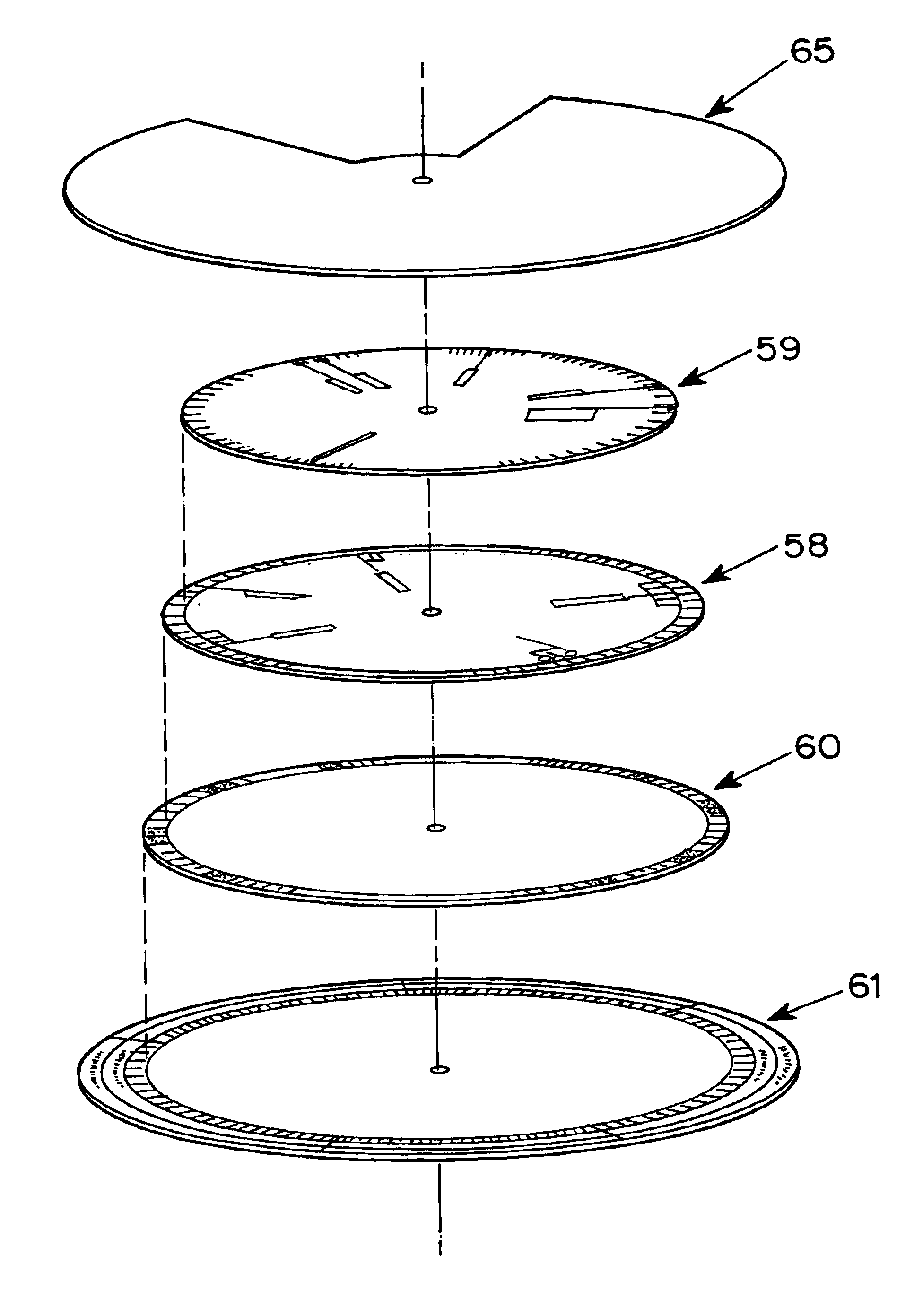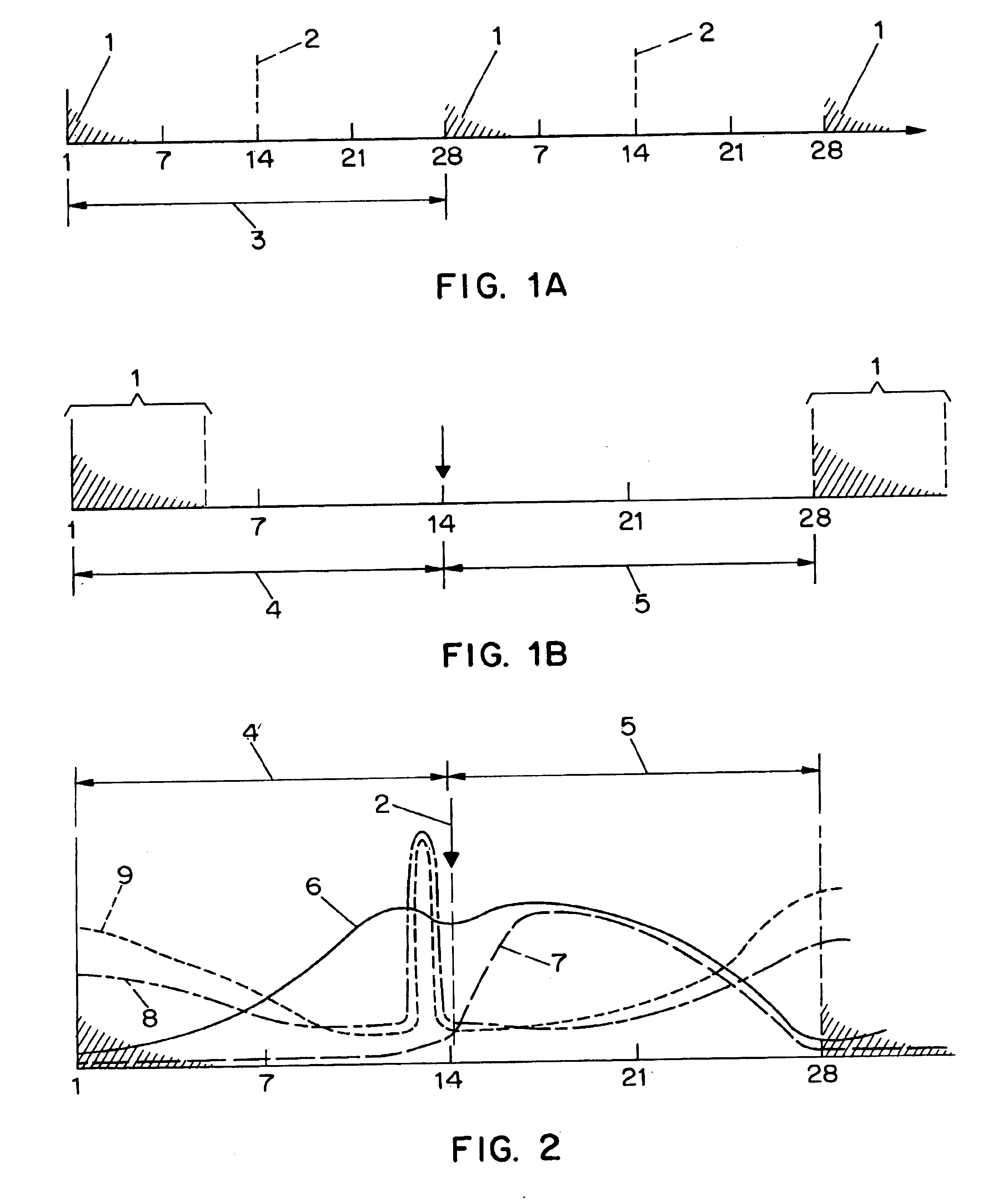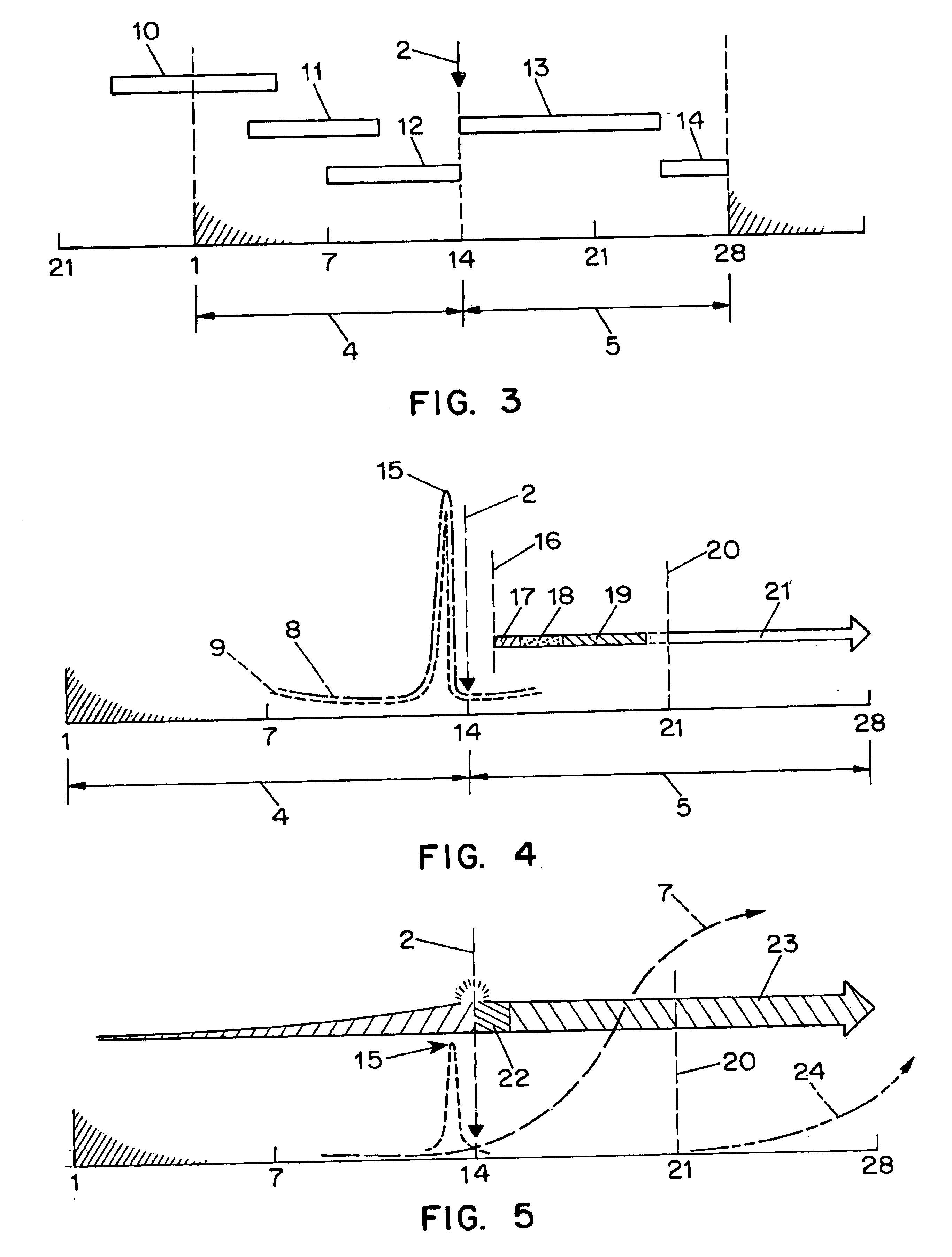Apparatus for calculating time periods
a technology of time period and calendar, applied in the field of calendar, can solve the problems of complex operation of the device complex calculation of human fertility time period, etc., and achieve the effect of simple, accurate and easy-to-read
- Summary
- Abstract
- Description
- Claims
- Application Information
AI Technical Summary
Benefits of technology
Problems solved by technology
Method used
Image
Examples
Embodiment Construction
[0078]The time period and future date calculator of the invention may be adapted to any type of date calculation depending on what events are printed on the discs. The invention will be described in terms of the fertility timing, testing, and treatment calculator embodiment. While the following discussion relates to the menstrual cycle of a human, the invention may be modified to represent the menstrual cycle and associated fertility timing, testing and treatment events of a non-human animal. Examples of non-human animals for which the invention may be modified include cattle, horses, pigs, sheep, and dogs, as well as exotic zoo animals. The calculator may be especially useful for managing captive breeding programs for endangered animals.
Menstrual Cycle Components
[0079]The average length of the human menstrual cycle is 28 days, but the normal range for this value is generally between 26 and 38 days. Cycle length is defined as the number of days from the start of one menstrual period...
PUM
 Login to View More
Login to View More Abstract
Description
Claims
Application Information
 Login to View More
Login to View More - R&D
- Intellectual Property
- Life Sciences
- Materials
- Tech Scout
- Unparalleled Data Quality
- Higher Quality Content
- 60% Fewer Hallucinations
Browse by: Latest US Patents, China's latest patents, Technical Efficacy Thesaurus, Application Domain, Technology Topic, Popular Technical Reports.
© 2025 PatSnap. All rights reserved.Legal|Privacy policy|Modern Slavery Act Transparency Statement|Sitemap|About US| Contact US: help@patsnap.com



